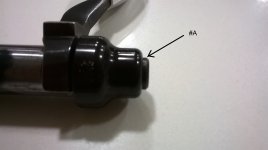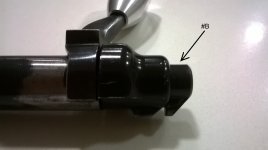The problem you describe is common on Remington type actions.
As the bolt is inserted into the action and the handle pressed down the firing pin engages the trigger sear,
with further downward motion of the bolt handle, it appears that the firing pin is extending out of the bolt.
This is a misconception. Once the pin and the trigger sear engage the pin can no longer move.
What you are seeing is the bolt lugs engaging and pushing the bolt forward.
With the pin held in place and the bolt moving forward compressing the pin spring approximately another 0.035” to 0.037” .
This is what is causing that last bit of closing pressure.
Not much can safely be done to remedy this problem.
When I feel my bolt getting a bit sticky I take it apart, clean it, oil it lightly and put it back together.
Bob



